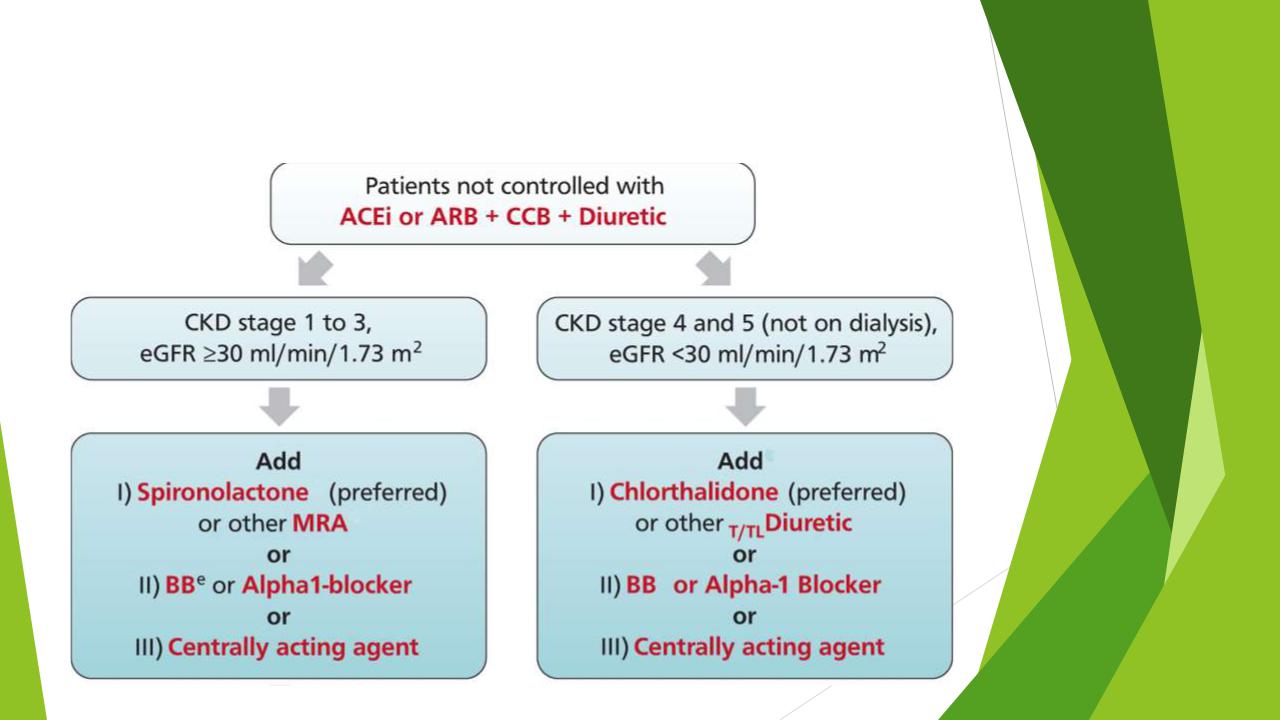
Lesson topic №21 Синдром артериальной гипертензии (Arterial hypertension in the outpatient setting) (1)
.pdf
Dihydropyridine calcium channel blockers
Most RCTs demonstrating their benefits on outcomes have used DHP– CCBs, especially amlodipine.
DHP-CCBs may be used, if necessary, to control an elevated BP in patients with HFrEF, although caution is needed because of their moderate negative inotropic effects.

Nondihydropyridine calcium channel blockers
Diltiazem and verapamil also belong to the class IV of antiarrhythmic drugs. Accordingly, they can delay atrioventricular conduction and slow heart rate in patients at sinus rhythm.
DHP-CCBs are also used for heart rate control as an alternative to BBs in AF.
Both drugs exhibit a potential for drug interactions because they inhibit the Cytochrome P450 3A4 enzyme and the drug efflux transporter P- glycoprotein, which can impair the tolerability and safety of other drugs, some statins (e.g. simvastatin, atorvastatin or oral anticoagulants) by increasing their plasma levels.
Use of non-DHP-CCB is not recommended in HFrEF because of their pronounced negative-inotropic effect.

Thiazide/Thiazide-like diuretics
The effectiveness of Thiazide/Thiazide-like diuretics in preventing CV morbidity and mortality has been shown in RCTs and meta-analyses, with an effect similar to the effect of other major antihypertensive agents.
Thiazide/Thiazide-like can lower serum potassium and have a side-effect profile that is less favorable than RAS blockers.
Depending on the dose, they may also increase insulin resistance and, hence, the risk of new-onset diabetes.

Loop diuretics
Thiazide/Thiazide-like are considered less effective antihypertensive agents in patients with a reduced GFR (eGFR <30 ml/min/1.73 m2).
While loop diuretics (furosemide, bumetanide, torasemide/torsemide) are usually not indicated in the treatment of uncomplicated hypertension, they are recommended in patients with CKD stage 4 and 5 (eGFR below 30 ml/1.73 m2) and in patients with severe fluid overload/retention, e.g. in patients with HF or nephrotic syndrome.

Mineralocorticoid receptor antagonists
The MRAs spironolactone and eplerenone are established treatments in HFrEF based on outcome-based RCTs, but no outcome trial has been carried out in hypertension.
The MRAs are used in specific conditions such as hyperaldosteronism or resistant hypertension.

Beta-blockers
The Betas-blockers are used in a specific indication, e.g. in patients with HF, angina, post-MI, AF or in younger hypertensive women of childbearing potential or planning pregnancy and hypertension with elevated resting heart rate >80 bpm

Angiotensin receptor-neprilysin inhibitor (ARNI)
Currently, in most countries, the drug is only approved for the treatment of HF, where it showed better effects on outcomes than treatment with an ACEi in patients with HFrEF.
ARNI is not approved for the treatment of hypertension in Europe or in the USA, while it was approved as an antihypertensive agent in China and Japan.

Antihypertensive drug combinations
In most patients, treatment should be initiated with an single-pill combination (SPC) of two drugs to improve the speed, efficiency and predictability
of BP control.
The preferred two-drug combinations should be an RAS blocker with a CCB or a Thiazide/Thiazide-like diuretic.
A BB can be used at any step of combination with any drug from the other major drug classes in several conditions.
Initial monotherapy is recommended for very-high-risk patients with a highnormal BP as well as (for cautionary reasons) for very old and frail patients. It may also be considered in low-risk patients with stage 1 hypertension whose SBP is more modestly elevated (<150 mmHg).
Regardless the initial treatment choice, ultimately most patients should be on combination treatment, using SPC whenever possible.

Antihypertensive drug combinations

Antihypertensive drug combinations
